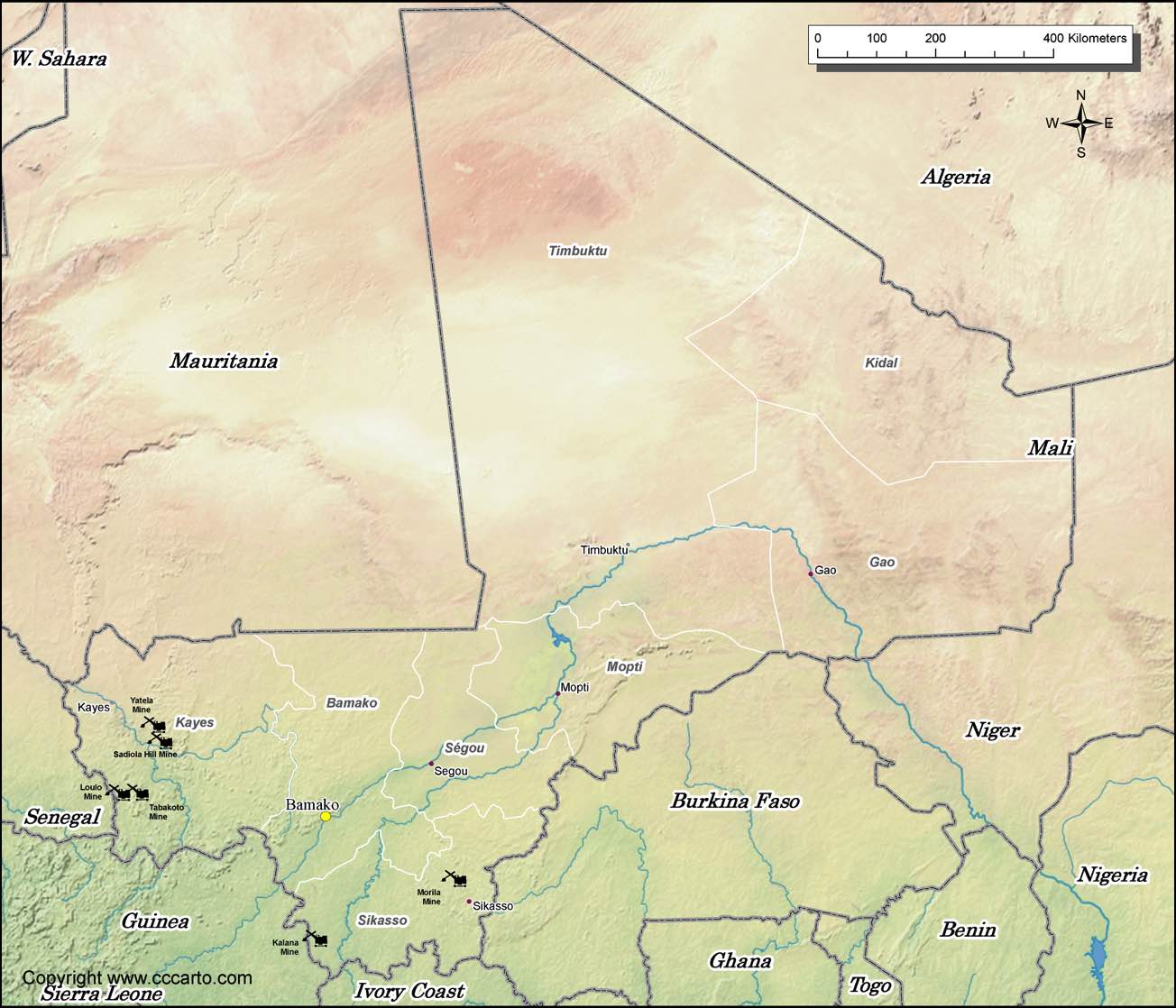
Mali Goldmines
Early History and Pioneers
The earliest gold mining in Mali dates back to ancient times, with significant evidence from the Mali Empire period (circa 1235-1600 AD). The empire was renowned for its wealth, largely attributed to its vast gold resources. Early gold mining was largely carried out by local miners using traditional methods. One of the most notable early figures in gold mining history was Mansa Musa, the emperor of Mali in the 14th century, whose extravagant pilgrimage to Mecca in 1324 showcased Mali's immense wealth, partly derived from gold. The Mali Empire's wealth and influence in gold were so significant that the region became a major trading hub for gold in the medieval Islamic world.Control and Major Mines
In the 19th and early 20th centuries, European colonizers and mining companies began to take an interest in Mali's gold resources. The French colonial administration, which controlled Mali (then known as French Sudan) during this period, initiated more systematic exploration and mining. Major companies such as the Compagnie des Mines d'Or de Syama and the Compagnie des Mines de Kéniéba took control of many mining operations. The introduction of modern mining techniques began to reshape the industry.Major Gold Mines and Mining Techniques
Mali is home to several major gold mines, including:1. Sadiola Mine: Located in the Kayes Region, it is one of Mali's largest and most productive gold mines. It primarily produces gold from oxide ore.
2. Yatela Mine: Also in the Kayes Region, this mine was known for its high-grade gold deposits, but it has since ceased operations.
3. Loulo-Gounkoto Complex: This is a significant mining operation in the Western part of Mali and consists of the Loulo and Gounkoto mines, known for their substantial gold reserves.
4. Morila Mine: Located in the southern part of Mali, it has been a major contributor to Mali's gold production, though it has been winding down operations.
The types of gold mining methods used in Mali have evolved over time. Early mining was primarily done using traditional methods such as panning and sluicing. With advancements in technology, more sophisticated techniques like cyanide leaching and hydraulic mining have been employed. Among the most successful methods in Mali, open-pit mining and heap leaching have been particularly effective for the large-scale extraction of gold from ore.
Famous Gold Strikes and Richest Mines
Mali has been known for several notable gold strikes. The discovery of high-grade gold deposits in the Kayes Region and the Loulo-Gounkoto area has been particularly significant. These regions have yielded some of the richest gold veins and have been the site of extensive mining operations.Cities and Gold Trade
Several cities in Mali, including Bamako, the capital, and Kayes, have historically been connected to gold mining activities. These cities developed around gold mining operations and continue to play a significant role in Mali's gold trade.Gold from Mali is sold through various channels, including direct sales to international buyers and through global gold trading markets. The gold often ends up in major trading hubs in Europe and North America.
Current Conditions for Miners and Economic Impact
Modern gold miners in Mali generally face challenging conditions. While some miners work for large companies and benefit from better wages and conditions, many others, especially those involved in artisanal mining, face difficult working conditions and lower earnings. The government and various organizations are working to improve miners' livelihoods and working conditions.Gold Coins and Environmental Impact
Mali has minted several gold coins, including commemorative pieces and bullion coins, often featuring historical and cultural themes related to Mali's heritage.The environmental impact of gold mining in Mali has been significant. Issues such as deforestation, soil degradation, and water pollution have been linked to mining activities. The use of mercury in artisanal mining is particularly problematic, leading to harmful environmental and health effects.
Mine Status
As of recent reports, some mines in Mali have been closed or are in the process of closure due to depletion of reserves or economic factors. However, many of the major mines, such as Sadiola and the Loulo-Gounkoto complex, continue to be productive and contribute significantly to Mali's gold output.The gold mining industry in Mali remains a crucial part of the country's economy, with ongoing developments aimed at improving practices and addressing the challenges associated with mining activities.
Source: U.S. Geological Survey, Major mineral deposits of the world, Open-File Report 2005-1294. Data portal